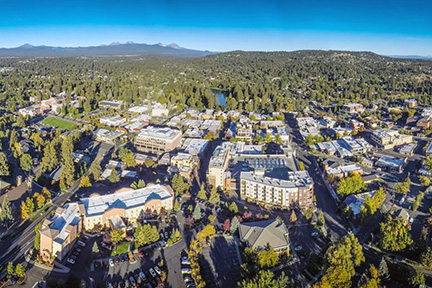By Adam Bledsoe, Broker
In recent months, the pace of conversation surrounding Opportunity Zones has accelerated a great deal, and as with any new tax law, questions lead to more questions. After being party to a few panels with real “pros” in the OZ world, here are a few things we now know, and a few others that remain cloudy.
ASPECTS CLARIFIED
Exclusion — The most lucrative incentive in the program is without a doubt the exclusion of gain on new investments. While deferral of tax liability and nominal steps-up in basis are certainly advantageous, investors are looking to create investments with the most potential for future appreciation and structuring their Qualified Opportunity Funds (QOFs) with that end in mind. It’s important to note that, in order to take advantage of the exclusion, the QOF must hold the new investment for at least 10 years.
Entity Type — QOFs must be either a partnership or corporation. Single member LLCs are not eligible entities for the program.
Complexity and Cost — QOF investing is a bit complicated. Without getting too far into the weeds here, it’s fair to say that QOF investors will be incurring significant CPA and legal fees. In order to remain a qualified fund, there are a series of “tests” that must be passed, and forms filed quarterly, and the rules and penalties for these tests are still in process.
Effect on RE Values — The question, “Will OZs cause inflated prices?” comes up a lot. Professionals in the QOF world overwhelmingly answer, “no.” Investing in a QOF will not turn a bad deal into a good deal. There are significant costs involved, most notably the “substantial improvement” requirement which stipulates that the QOF must improve a property or business by an amount “equal to or greater than the adjusted basis” — essentially, the QOF must make improvements equal to the value of the investment, net of land cost.
Timing — The program begins to sunset at the end of 2019. A QOF is eligible for two steps-up in basis, equating to 10% if held for 5 years, and another 5% if held for 7 years. The QOF election period ends on 12/31/2026. In order to hold a property for 7 years and take advantage of the full 15% basis steps-up, a QOF would need to make its investment by the end of 2019.
QUESTIONS OUTSTANDING
Math – There will be a substantial amount of calculation involved in quarterly filings to meet the requisite tests, and the IRS has not provided guidance for exactly how to calculate the test benchmarks. Further, there is currently not an exact equation for calculating the “substantial improvement” requirement. As it pertains to real estate, the “substantial improvement” requirement is widely accepted to be an amount equal to the property value net of land cost, so in other words, the QOF must essentially double the value of a property’s structures.
State Taxes – States are moving slowly to indicate whether they will mirror the federal law, ignore it all together, or partially comply. Oregon appears to be leaning toward non-compliance, meaning a QOF investor will still have state tax liability on the capital gain they are intending to re-invest.
Raw Land – Both the tax code and the general consensus are still a bit fuzzy on the “substantial improvement” requirement for raw land. If a QOF is required to make improvements equal to or greater than the adjusted basis, it is unclear what that number will be for raw land which has an adjusted basis of zero.
In summary, the OZ provision in the new tax law appears to be achieving its intent, at least initially. It is spurring investment in the identified zones, and giving investors a vehicle to reinvest gains domestically, and locally. Rulemaking is slated to be complete by the end of 2019, which will add a welcome dose of clarity, but OZ experts agree that investors should stay close to the “middle of the fairway” — that is, if one invests in line with the spirit of the OZ provisions, then upcoming rulemaking will likely not bring many surprises.
